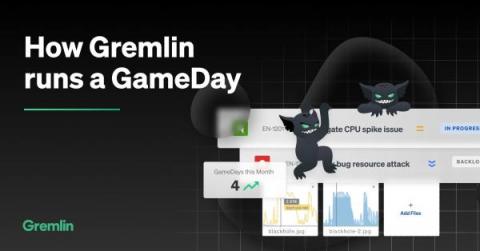Operations | Monitoring | ITSM | DevOps | Cloud
Latest News
Taking The Power Of Automation To The Edge
How The Experts Build Reliable Cloud Apps
Explore what's in store - Ubuntu Preview on WSL
Hot on the heels of our Ubuntu 22.04 LTS release, we’ve already started building our first images for Ubuntu 22.10, codename: Kinetic Kudu. Up until now, Ubuntu WSL users have had access to our current Long Term Supported (LTS) releases. These provide a stable Ubuntu development environment, deeply integrated with Windows, for data science, cloud, web and IoT developers. But what if you’re one of those folks who like to live life on the edge?
How to Make Your Incident Response Plan with Mattermost
For teams who deploy software to users around the world, every second counts when responding to outages and other incidents. It’s important that you have tools in your arsenal that are up to the challenge. Service monitoring, alerting, collaboration, and visibility are all essential components of a well-implemented incident response plan.
Creating snapshots in Jest for testing React applications
Automated tests are especially important in large applications that have lots of moving parts. It is smart to learn about many methods of testing applications so that you can provide as much coverage as possible. If you are not familiar with using snapshots in testing, read on. Snapshot tests are written as part of frontend test automation.
StackStorm 3.7.0 released
StackStorm v3.7.0 has been released thanks to the hard work from StackStorm volunteers and our community at large! We’re very proud to have such an engaged and active community who keep coming up with new ideas to improve the StackStorm experience.
Monitor your JumpCloud directory with Datadog
JumpCloud is a cloud-based directory platform that provides a unified approach to Active Directory and LDAP services centered around user authentication and network management. Using JumpCloud, companies can manage and provision user access to software, systems, and networks; enforce compliance with audit trails; and provide a unified login experience through single sign-on (SSO).
MoovingON Opens Amazon AWS Summit with Live Demo of Industry's Highest Automated Healing CloudOps Platform
How Gremlin runs a GameDay
You might be familiar with GameDays at this point. From watching our Introduction to GameDay webinar, viewing our Demo video, and reading our tutorial, you’ve probably learned that GameDays were created with the goal of increasing reliability by purposely creating major failures on a regular basis. Better yet, perhaps your own team has run a GameDay and learned something new about their services’ behavior during failure scenarios.











